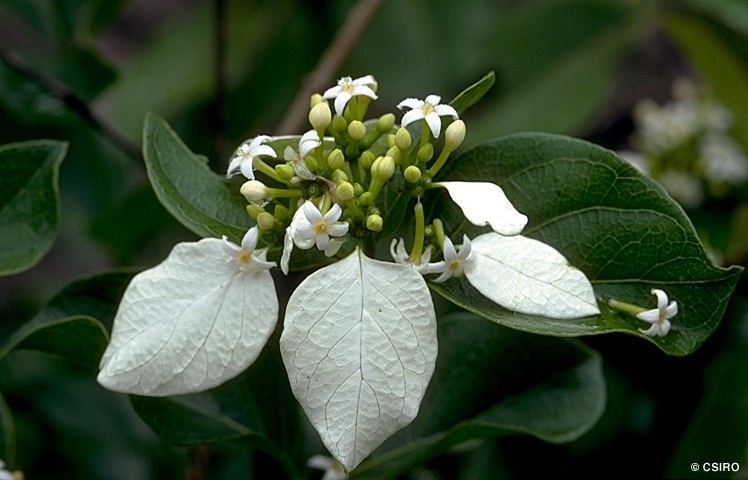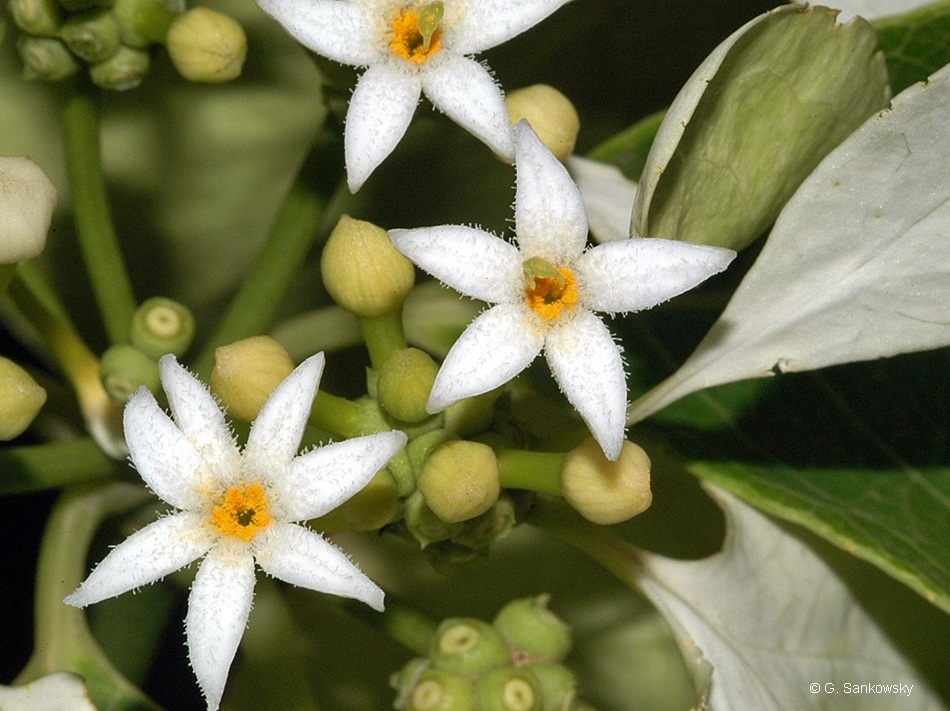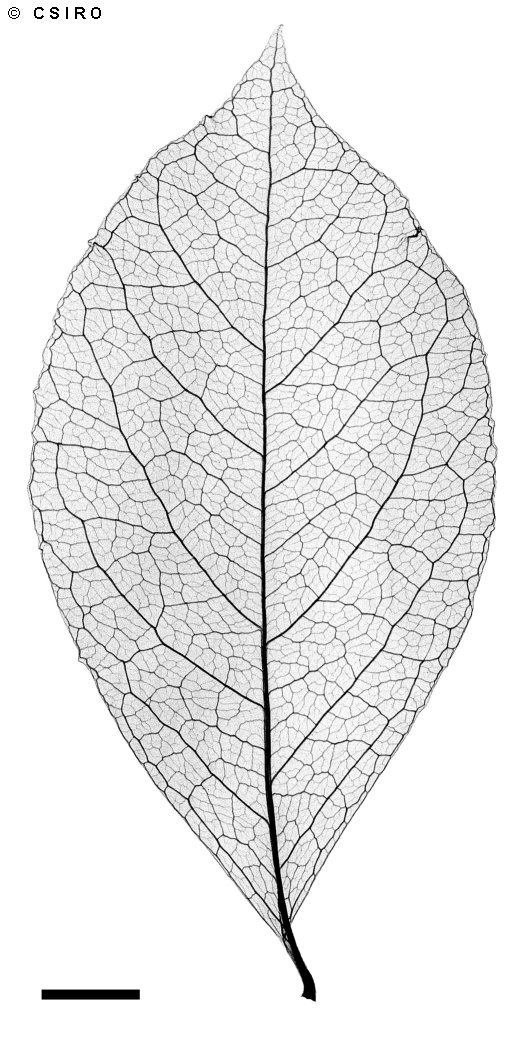Australian Tropical Rainforest Plants - Online edition
Coelospermum decipiens Baill.



Baillon, H.E. (1878), Bulletin Mensuel de la Societe Linneenne de Paris 1: 218
Ada-A; Mapoon
Occasionally grows into a vine but usually flowers and fruits as a shrub 1-2 m tall.
Leaf blades glabrous, about 7-11.5 x 3.5-7 cm. Domatia are inconspicuous foveoles with a few hairs around the orifice. Main lateral veins, about 6-7, raised on the upper surface. Petioles about 0.7-1.2 cm long, grooved or channelled on the upper surface. Stipules broadly triangular, about 2 mm long.
Flowers in a head with a few large, white, bract-like calyx lobes radiating from the centre. Calyx tube about 1-1.5 mm long (adjacent calyces +/- fused or tightly packed), calyx lobes nil or sometimes one very large white lobe about 80 x 50 mm. Corolla tube about 15-20 mm long, corolla lobes about 7-8 mm long. Corolla lobes and upper part of the corolla tube hairy on the inner surfaces. Anthers about 2.5-3 mm long, completely raised above the orifice of the corolla tube.
Fruits fused into heads, each fruit about 14 mm diam. Seeds about 10-11 x 6-7 mm. Testa quite thick and hard. Radicle about as long as the cotyledons.
Features not available.
Endemic to Queensland (?), occurs in CYP and NEQ. Altitudinal range from near sea level to 500 m. Usually grows in open eucalypt forest but also found in beach forest, bastard scrub, monsoon forest and rain forest margins.
This species causes problems with horses eating the leaves, particularly the young succulent leaves, which have a high content of selenium. The early symptoms of poisoning in horses is shown by lameness and abnormalities in the hooves. Everist (1974).
The author has noticed that when riding through areas where M. reticulata occurs, the horses recognize the plant and will deliberately depart from the direction of travel to get a few mouthfuls of the leaves which they appear to relish.
Leaf material of this species was active against some tumors. Collins et al. (1990).
Morinda reticulata Benth., Flora Australiensis 3: 424 (1867). Type: Queensland, Albany island, W. Hill; N.E. coast, A. Cunningham; syn: K?.





